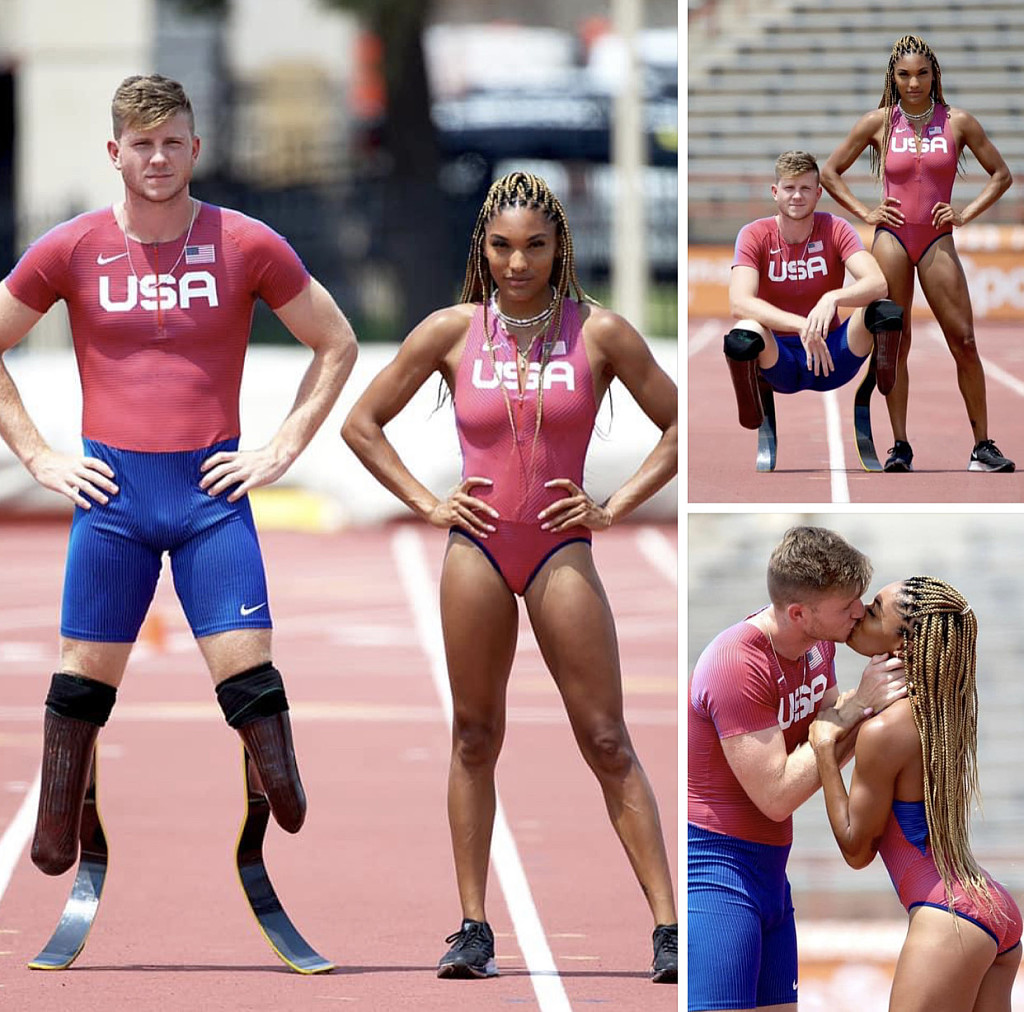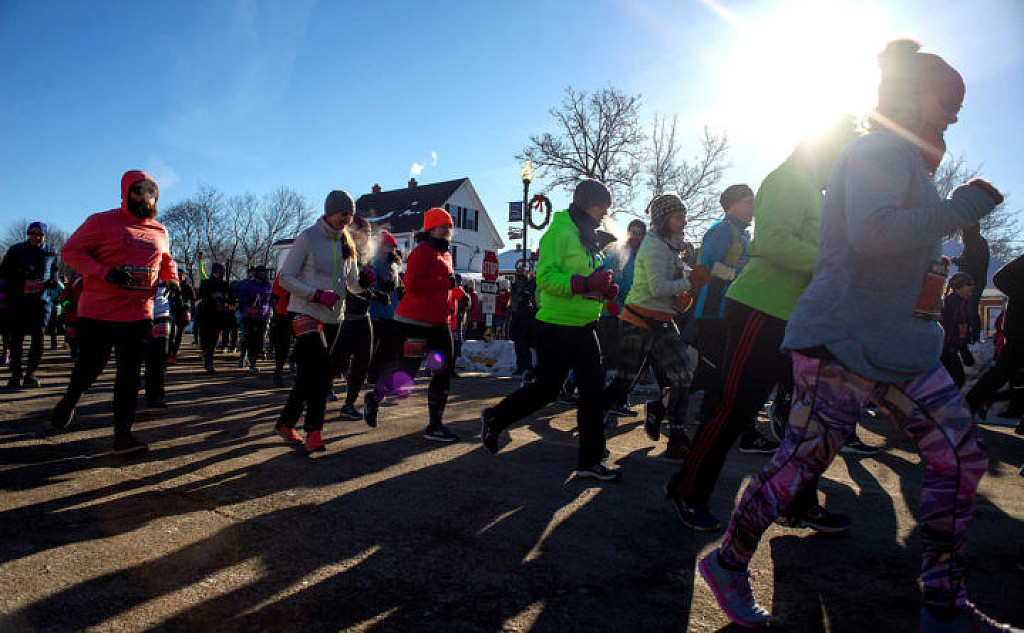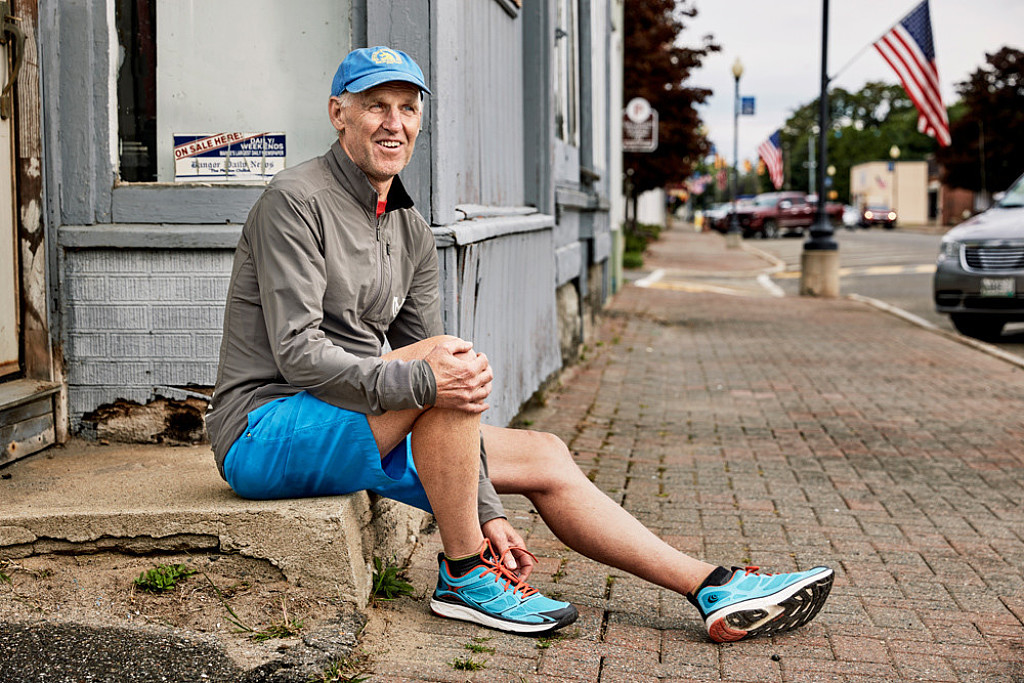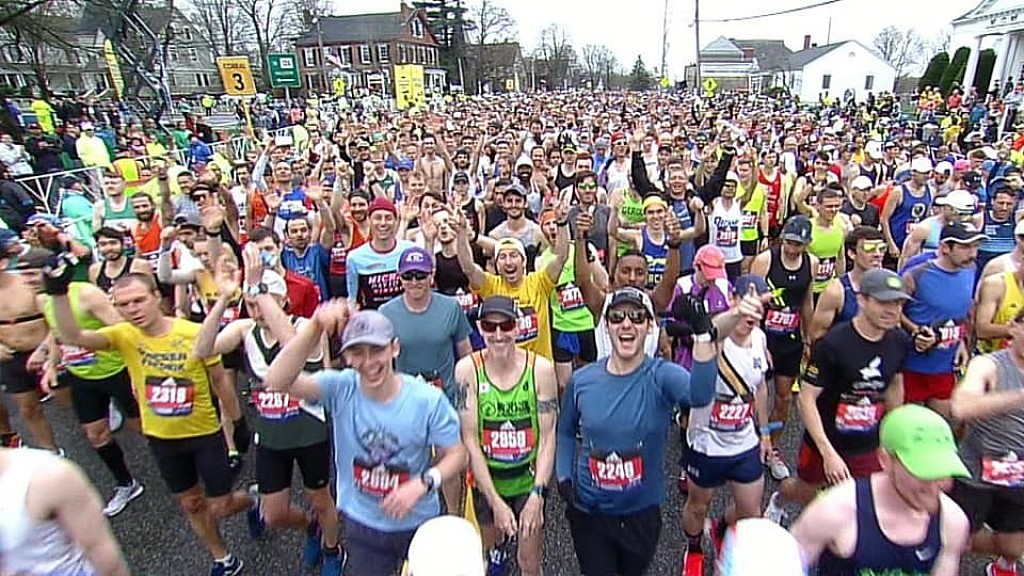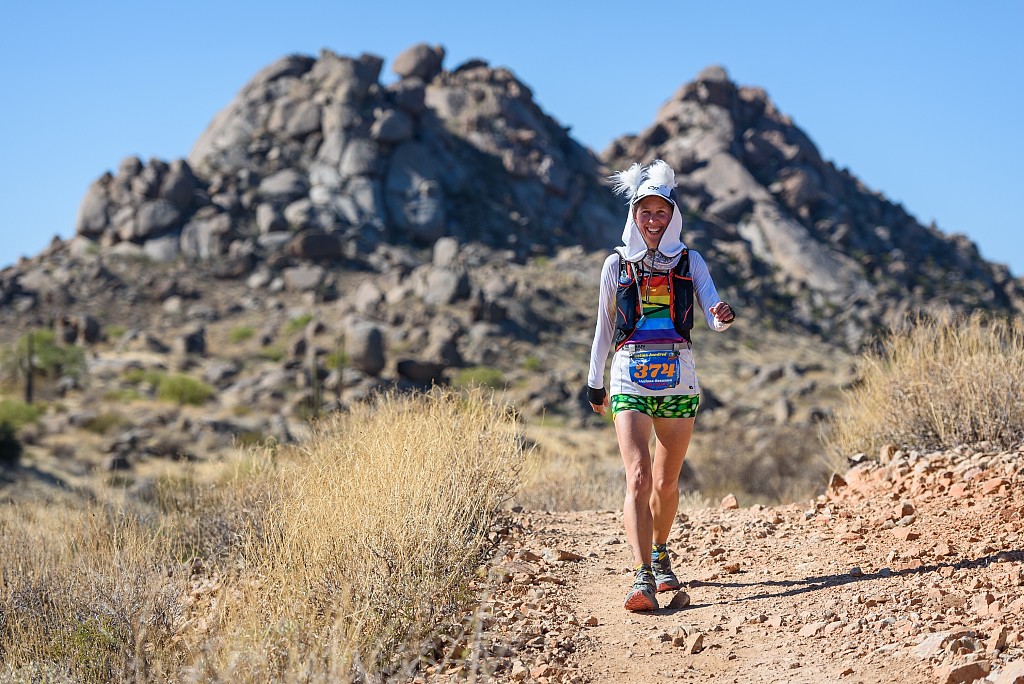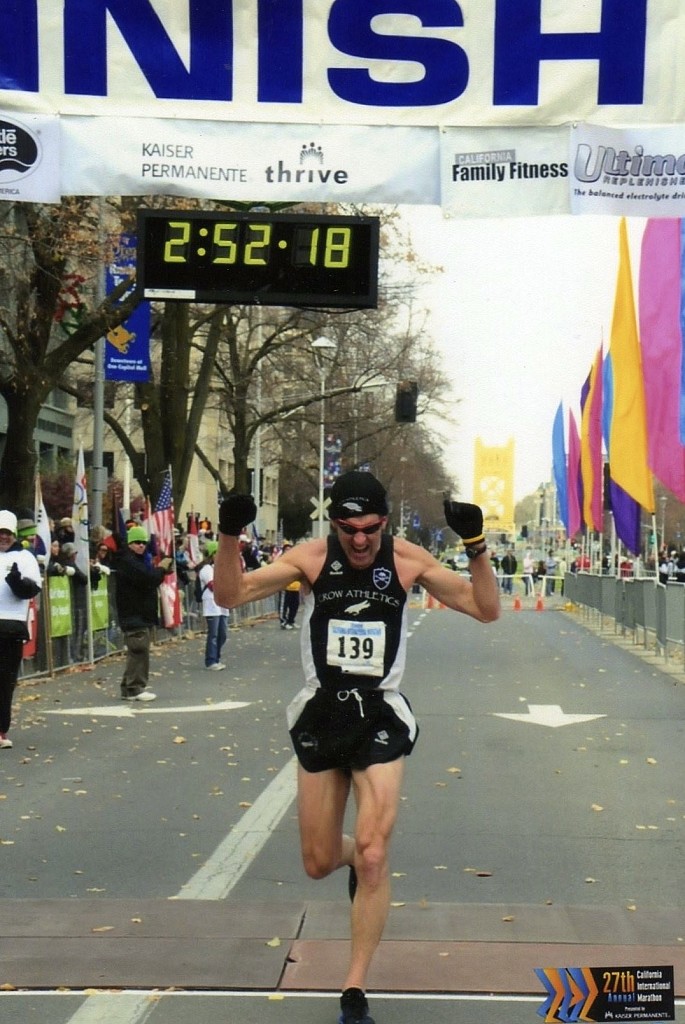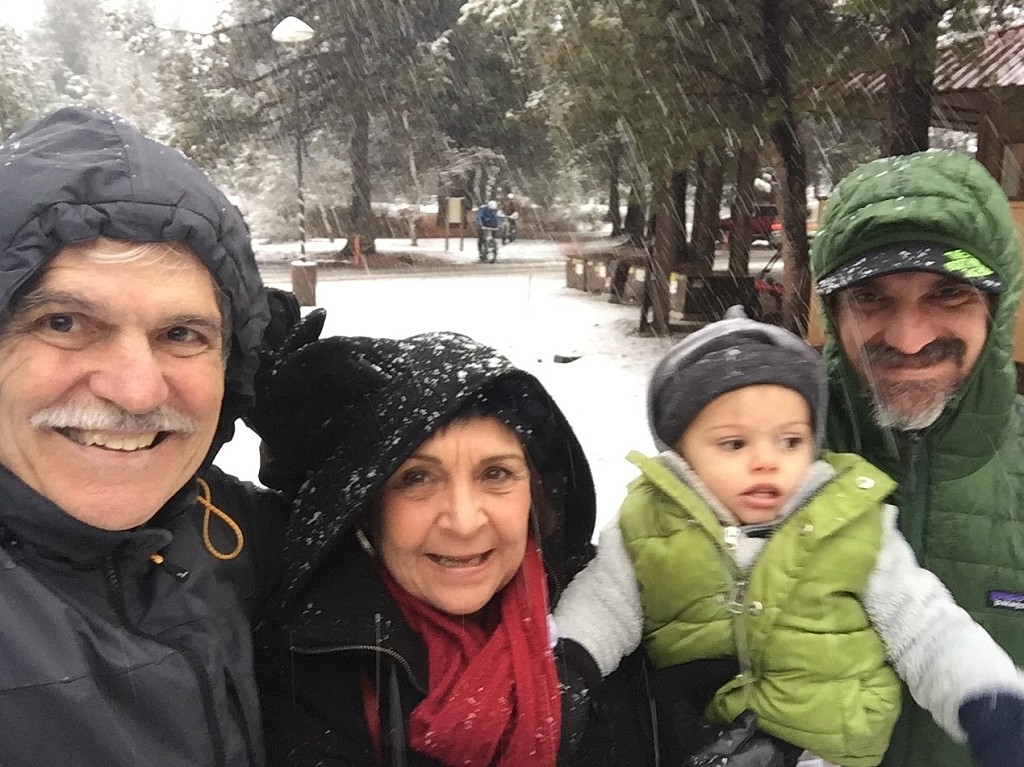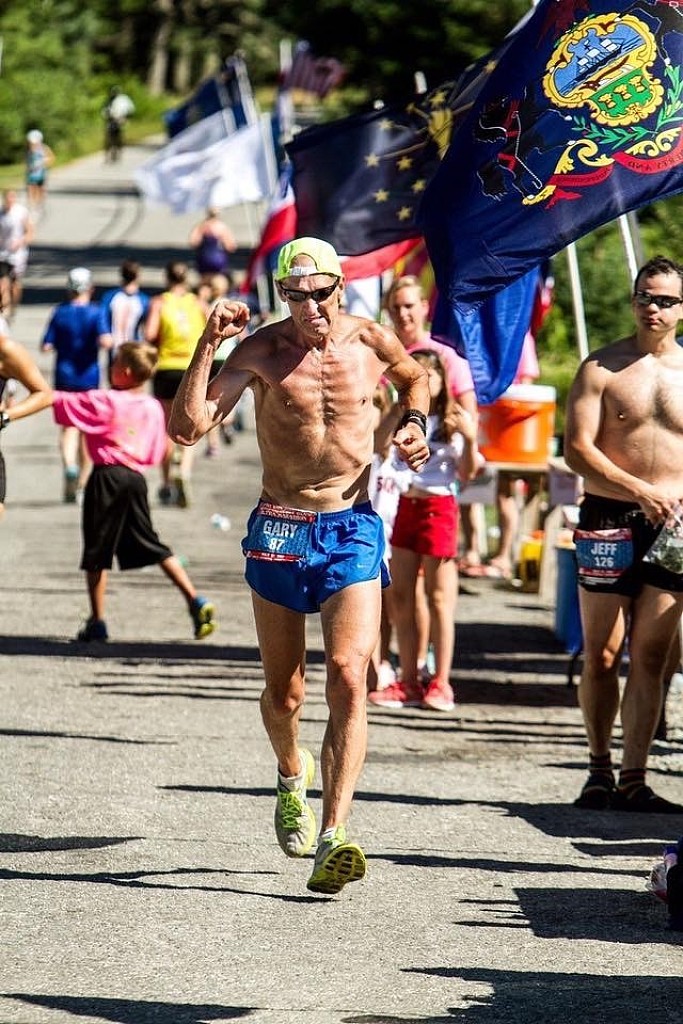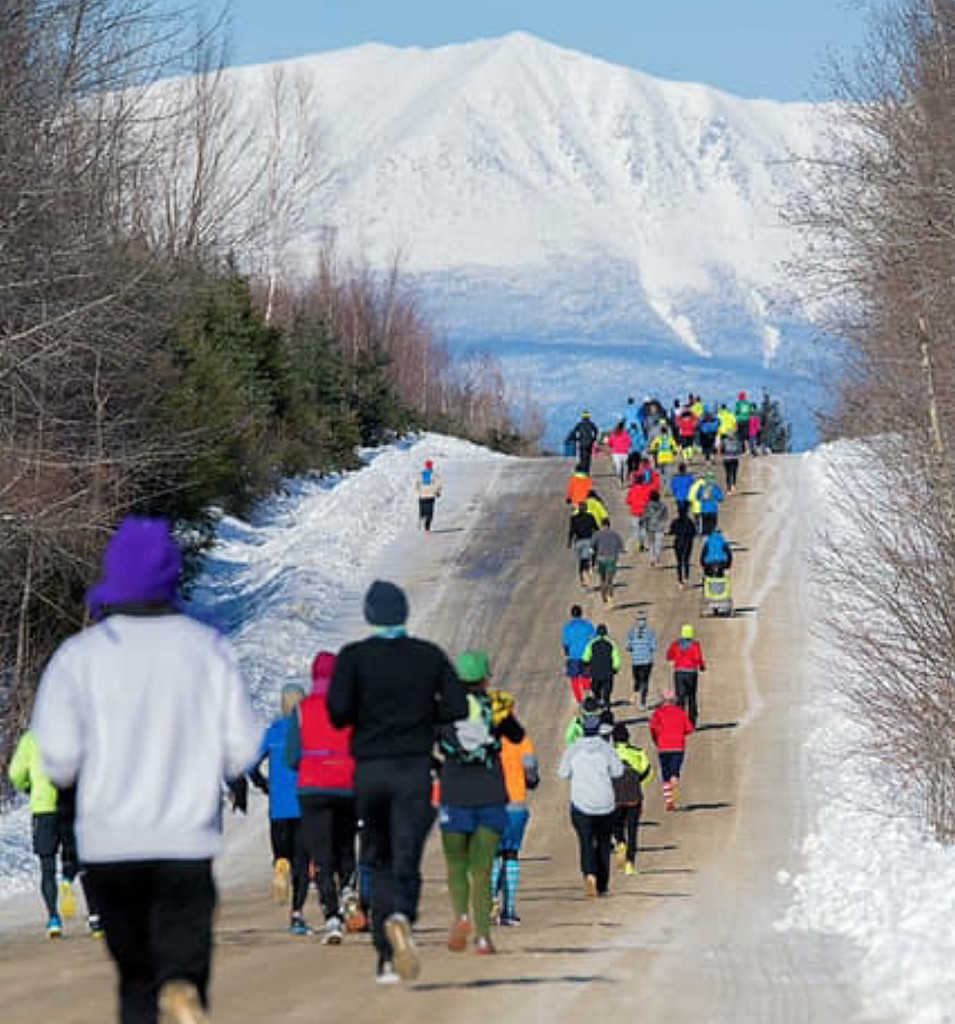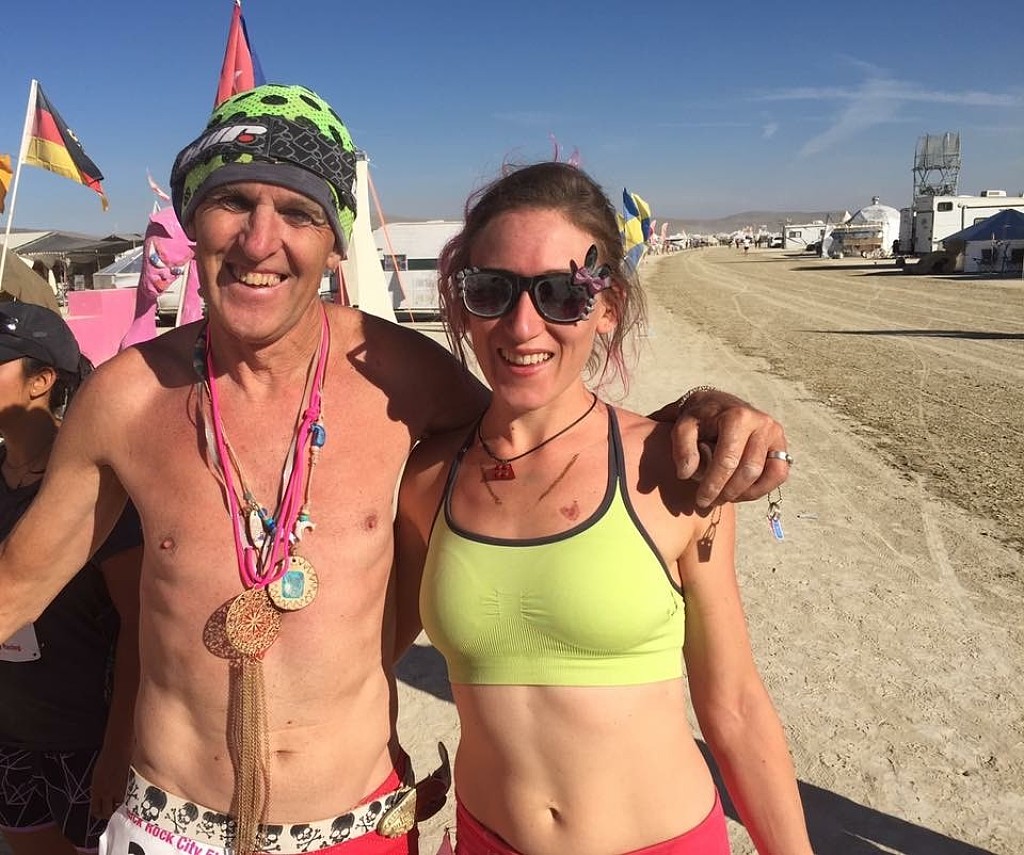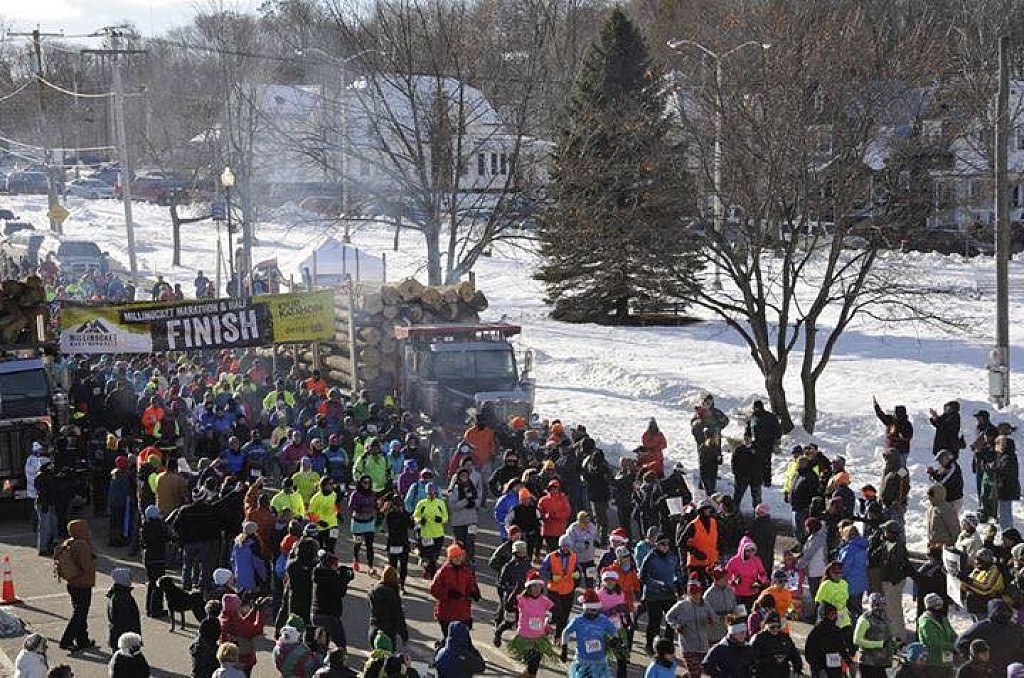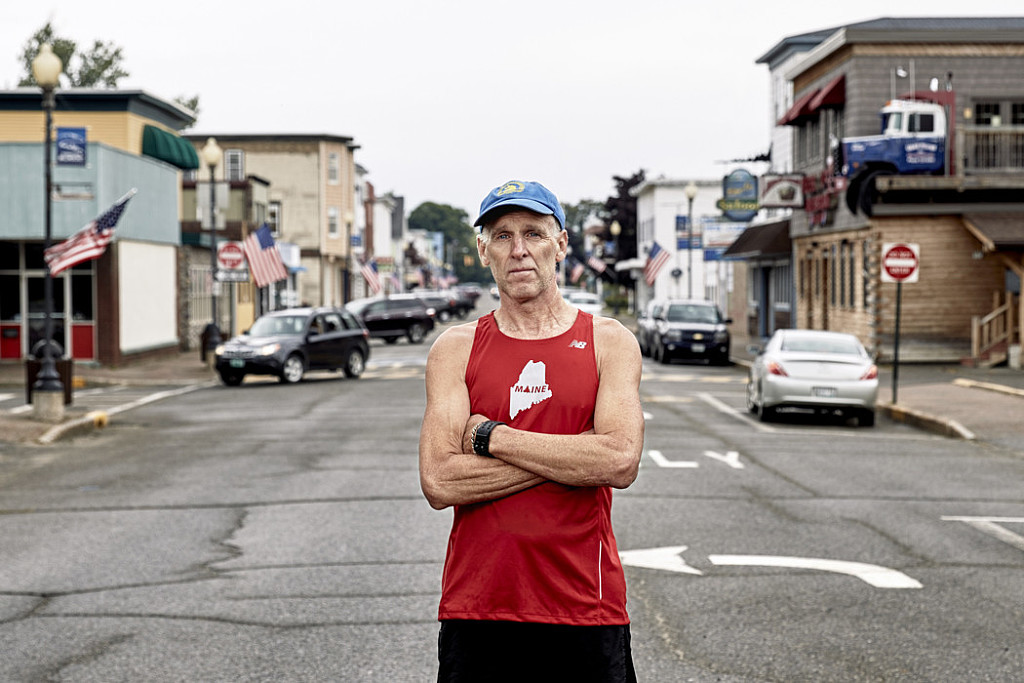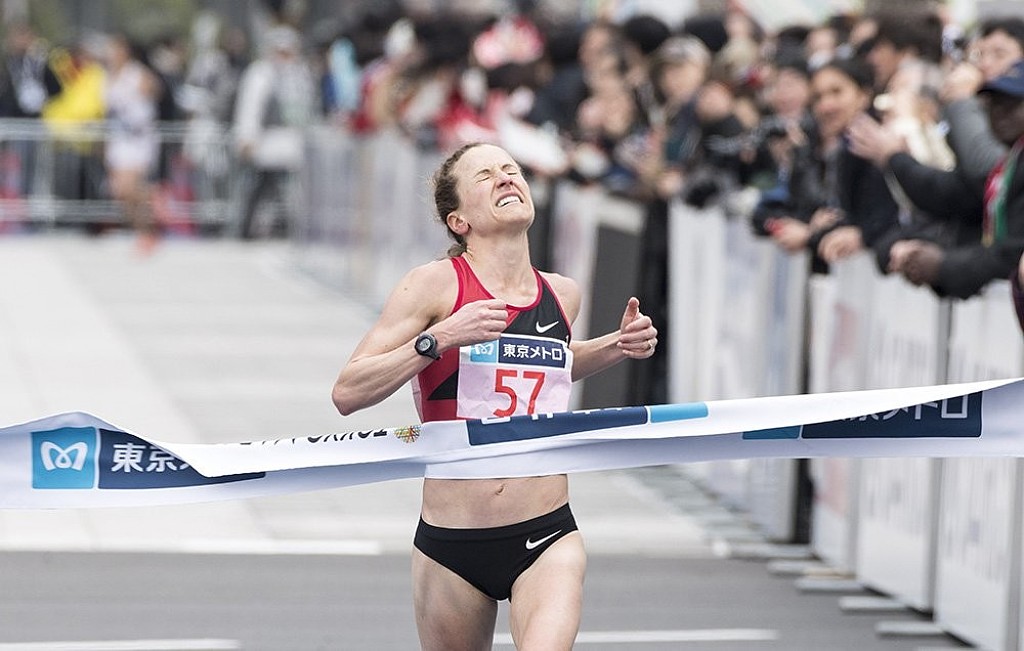Running News Daily
Running News Daily is edited by Bob Anderson. Send your news items to bob@mybestruns.com Advertising opportunities available. Train the Kenyan Way at KATA Kenya and Portugal owned and operated by Bob Anderson. Be sure to catch our movie A Long Run the movie KATA Running Camps and KATA Potato Farms - 31 now open in Kenya! https://kata.ke/
Index to Daily Posts · Sign Up For Updates · Run The World Feed
Articles tagged #Gary Allen
Today's Running News
Hunter and Davis are officially melting the Internet: Hunter on Instagram - They said Iテ「竄ャ邃「d never walk, So I learned to run instead!
#TeamUSA long jumper Tara Davis & Paralympic athlete Hunter Woodhall are officially melting the Internet!! I hope they both win gold in the #TokyoOlympicGames!! テーナク窶。ツコテーナク窶。ツク Posted Gary Allen on FB.
After two-time Paralympic medalist Hunter Woodhall ran a season-best 11.04 seconds in the 100-meter T62 sprint at the U.S. Paralympic Team Trials for Track and Field on June 18 in Minneapolis, he picked up his phone and FaceTimed his girlfriend immediately upon stepping off the track.

Tara Davis was already on the other side of the country, preparing for the long jump competition at the U.S. Olympic Team Trials in Eugene, Oregon. Woodhall and Davis, who train at the University of Arkansas and University of Texas, respectively, are accustomed to regular FaceTime calls at all moments in time to keep their long-distance relationship strong.
In Tokyo, Woodhall is expected to compete in both the 100 and 400; at the last Paralympic Games in Rio he won silver in the 200 and bronze in the 400. While he’s no longer competing at the NCAA level — he turned pro in January — he’s still training with the Arkansas team, having adjusted his schedule to peak at Trials and the Games as opposed to indoor and outdoor collegiate nationals.
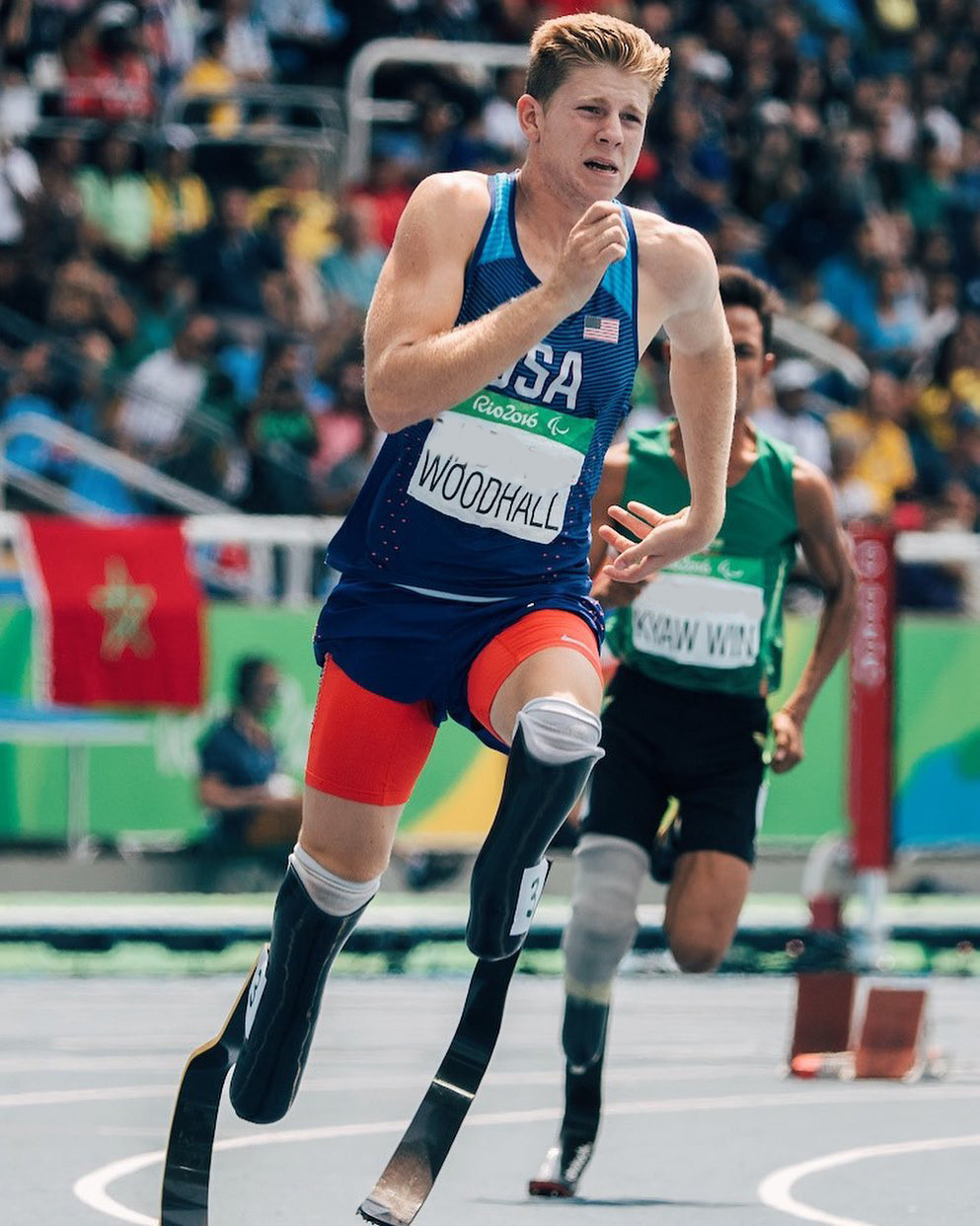
Davis was competing in her second Olympic Trials after finishing 19th in the long jump in 2016. She has held the American junior record in the event since 2017 and earlier this season broke Jackie Joyner-Kersee’s collegiate record set back in 1985.
Davis is also No. 2 at the junior level in the 60-meter hurdles.“I can't put into words how I'm feeling right now, there just are so many emotions,” Davis said to the website of the University of Texas, where she was an NCAA indoor and outdoor national champion.
“I say it all the time, I didn't think I was going to be here. I was going through so much I just didn't ever think I was going to be at the Olympic Trials. But here I am, and I was so grateful for the opportunity, and I took advantage of it.
”The couple, both 22, have been chronicling their journeys in their own YouTube channel, and Woodhall, a TikTok star who has more than three million total social followers across all his platforms, has been profiled by the likes of the New York Times and “The Ellen DeGeneres Show.
”The first double amputee track and field athlete to have earned a Division I athletic scholarship insists there will be as many reasons to follow the Para track and field athletes like himself in Tokyo, as the Olympic athletes like Davis.
“The biggest reason to tune in is because of the stories that come along with the Paralympics — things that people have had to fight through and go through just to be here,” he said.
“At the end of the day we are all humans and all in the same field. If people can come out here and compete after the things they’ve gone through and still be chasing their dreams, that shows that everyone’s on the same level.”
Login to leave a comment
2020 Millinocket Marathon cancelled due to the pandemic
The Millinocket Marathon has been cancelled due to concerns over COVID-19. The annual race was to be held on December 5th. The conditions in the state have not improved to the level they would be able to hold the race. The marathon had no fee to run, but competitors and fans were asked to spend what they could in town to help the region economically. We spoke with race director Gary Allen who still hopes to help.
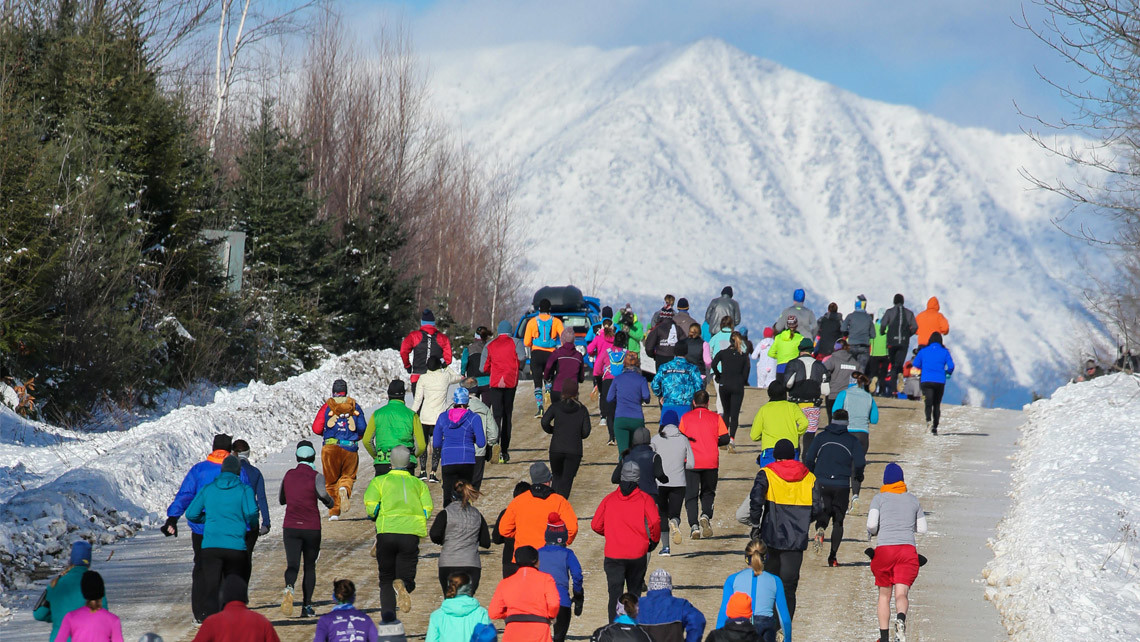
“You know cancelling the Millinocket Marathon was one of the toughest decisions I’ve made at this point. You know the business economy, this turned into something bigger than I ever imagined, I think it helped their morale as much as their pocketbooks.
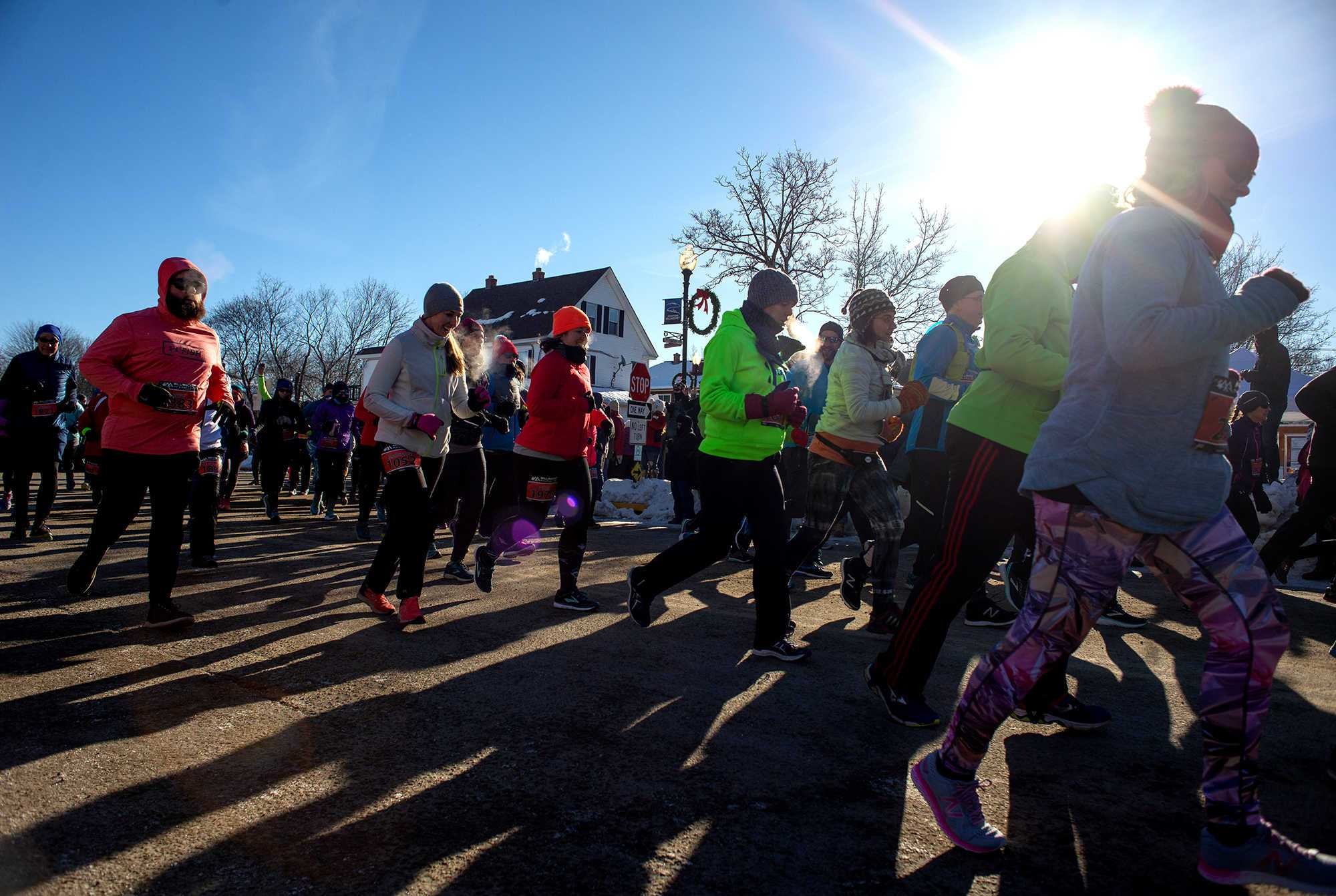
They really deserved a break and it is heartbreaking for me not to be able to bring this break to them,” says Millinocket Marathon race director Gary Allen, “I’m hoping we can appeal to runners to dig into their pocketbooks to purchase something online or contribute to good causes up there.
Or even not cancel their hotel rooms and just let the hotels take the income from that as a way to get through this period. We are definitely going to be coming up with ways runners can still “run Millinocket” so to speak and make a difference.”
Gary also organizes the MDI Marathon which would have been this coming weekend. He hopes they will be able to continue both annual races next year.
by Eric Gullickson
Login to leave a comment
Millinocket Marathon
The Millinocket Marathon & Half has again joined forces with the Mount Desert Island Marathon, Half & Relay to create the Sea to Summit Maine Race Series, featuring two amazing events and a very special finishers medallion! This FREE event was started in 2015 to help a struggling Maine mill town that has been devastated by the closing of their...
more...Andrew Schoeder of Madison, Wisconsin, and Sarah Mulcahy of Fort Kent were crowned champions of Saturdayテ「竄ャ邃「s fifth annual Millinocket Marathon
Andrew Schoeder and Sarah Mulcahy won the fifth annual Millinocket Marathon.
Two Bangor, Maine residents, Gabe Coffey and Flori Davis, won the accompanying Millinocket Half-Marathon. Both races were held simultaneously amid temperatures in the low 20s and a light, chilling breeze.
Schroeder, whose wife Angela is a Millinocket, Maine native, was the overall marathon champion with a time of 2 hours, 53 minutes and 23 seconds.
He ran among the leaders throughout the first of two 13.1-mile laps that made up the marathon route, which began and concluded in downtown Millinocket.
The 39-year-old Schroeder then took control during the second lap and finished nearly six minutes ahead of his closest rival, Iain Ridgway of Worcester, Massachusetts. Ridgway was the only other runner to finish in less than three hours with his time of 2:59.13.
“I thought anything under about 3:10 and on a good day a finish in the top 5 would be good,” said Schroeder, who ran a 2:38:13 at this year’s Boston Marathon.
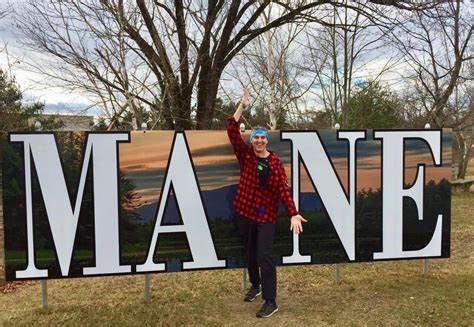
Buster Brown of Lamoine was the top Maine finisher in the marathon, placing third in 3:07:09.
Mulcahy, the only runner to complete all five Millinocket Marathons, used this race as an early training run for the 2020 U.S. Olympic Marathon Trials and won the women’s division for the fourth time with a clocking of 3:08:38. That effort was good for fourth place overall.
Mulcahy will compete in the Olympic Trials next Feb. 29 in Atlanta. She qualified during the 2018 California International Marathon with a time of 2:44:28. Six days later she won the women’s division of last year’s Millinocket Marathon.
“This was a training run for me so I didn’t push anything,” said the 34-year-old Mulcahy, who along with other runners dealt with tricky traction along some portions of the course Saturday due to snow that fell earlier in the week. “There’s no risking injury before February.”
Laura Richard of Fredericton, New Brunswick, was the second-fastest woman in the marathon field and 11th overall in 3:32.49. Jennifer Schott of Nashville, Tennessee, was next, placing 19th overall in 3:46.47.
Coffey, a former Bangor High School distance running standout who now is competing as a freshman at Bates College in Lewiston, won the men’s half-marathon by more than two minutes with his time of 1:19:54.
“It’s the start of indoor track for me so I’m building up mileage,” said the 18-year-old Coffey. “I wouldn’t say I’m in the best shape but I’m in good enough shape to come out here, give it a good run and have some fun.”
Robert Ashby of Brunswick finished second in 1:22:11 with Brewer’s Kris Garcia third in 1:23:26.
Davis, who gave birth to a child on June 18, was surprised with her victory in the women’s half-marathon but she won comfortably with a time of 1:30:32. That was good for 17th place overall.
“I had no idea what the course was like so I went into it completely blind,” said the 32-year-old Davis. “It was a little hillier than I expected and the first half was really hard and I haven’t trained at all through snow or ice so half the time I was just trying not to fall down.
“I was not expecting at all to win. I was just running it for fun.”
Sarah Russell of Cumberland was second in the women’s division in 1:33:19 while Kayla Morrison of Limington placed third in 1:34:25.
More than 2,300 runners pre-registered for the free-to-run races, which were created by entrepreneur and veteran distance runner Gary Allen of Cranberry Island in 2015 in an effort to support Millinocket’s economic rebound from the closing of the Great Northern Paper Co. mill.
“It’s a great race with a lot of support,” Schroeder said. “Everybody’s so positive, it was just a lot of fun. People were cheering the whole way.”
Login to leave a comment
Millinocket Marathon
The Millinocket Marathon & Half has again joined forces with the Mount Desert Island Marathon, Half & Relay to create the Sea to Summit Maine Race Series, featuring two amazing events and a very special finishers medallion! This FREE event was started in 2015 to help a struggling Maine mill town that has been devastated by the closing of their...
more...Gary Allen the founder of Millinocket Marathon was honored by governor at tourism conference
The founder and director of the Millinocket Marathon and several other significant endurance events across Maine was honored during the recent Governor’s Conference on Tourism at the Augusta Civic Center.
Gary Allen of Cranberry Isles was presented the 2019 Governor’s Conference on Tourism Originality Award for his creative work in organizing cutting-edge events that help build, empower and activate Maine communities.
This award is presented to companies, organizations or persons who have made significant contributions to Maine’s tourism industry.

Allen is the first individual to win the award.
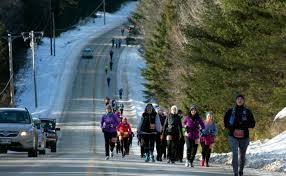
“Gary Allen is emblematic of the Maine spirit of originality,” Steve Lyons, director of the Maine Office of Tourism, said in a release. “His vision for a kind of ‘participation tourism’ that binds visitors and communities is directly in line with current trends in the types of experiences today’s visitors seek, and is a commendable example of sustainable tourism.”
The award specifically recognizes the Millinocket Marathon, which has earned national accolades for its cutting-edge, pay-it-forward, free-to-participate platform.
The December race has attracted thousands of new visitors to the Katahdin area and has provided a major economic boost to a region devastated by the collapse of the northern Maine paper industry.
Participants not only are going to the Katahdin region from all across the United States for the race, but several attendees recently have purchased homes in Millinocket.
“I am beyond thrilled to be recognized for what I do but make no mistake, I believe these accolades represent the absolute tip of the iceberg for what we can do here in Maine to grow our tourism economy by thinking outside the box,” Allen said in the release.
Login to leave a comment
Millinocket Marathon
The Millinocket Marathon & Half has again joined forces with the Mount Desert Island Marathon, Half & Relay to create the Sea to Summit Maine Race Series, featuring two amazing events and a very special finishers medallion! This FREE event was started in 2015 to help a struggling Maine mill town that has been devastated by the closing of their...
more...Just how tough is the Boston Marathon? from Marathon Man Gary Allen File 6
Just how tough is the Boston Marathon and how many times are runners told to resist the urge to start too fast....a very common mistake at the Boston Marathon.
OK don’t take my word for it, statistics don’t lie, Dave McGillivray the race director shared the following, “Of the 26,658 finishers, onl 705 ran the 2nd half faster than the first half for a measly 2.64%.”
This of course means 97.36% of the entire field were slowed by the tough terrain of the second 13.1 miles. I personally believe it was less about the Newton hills and more about imprudent pacing.
You see, Boston’s early downhills are almost impossible to resist. Speaking from experience, I have run the Boston Marathon 24 times and I think I might have run negative splits just twice. Yes, I started too fast.
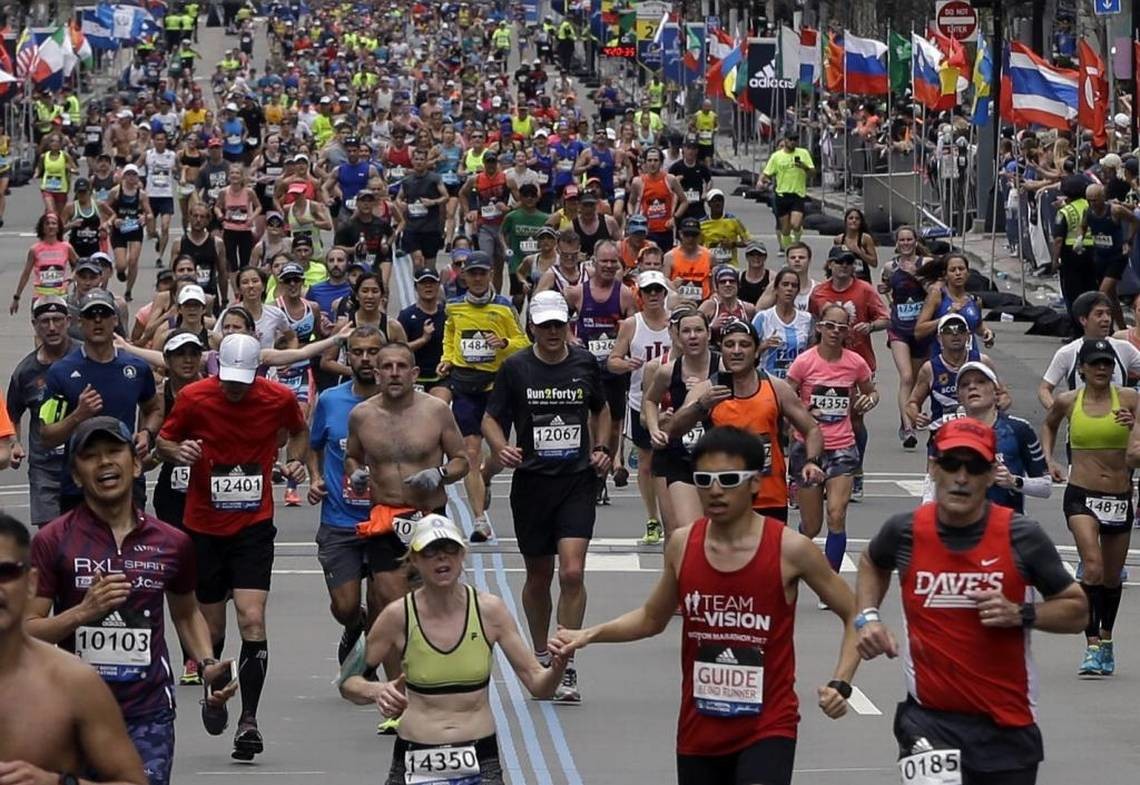
Is this a common phenomenon at the Boston Marathon? Check out these statistics from an experienced marathoner and a good friend Stephen Peckiconis, “it doesn't vary much.” His split stats show just 749 / 2.81% ran negative splits in 2016 and only 812 / 3.07% in 2017.
So if you want to have success at Boston, run conservatively early or you’ll join the vast majority who slow or struggle in the second half every single year.
Marathon Man Gary Allen is a regular writer for My Best Runs
by Gary Allen
Login to leave a comment
Boston Marathon
Among the nation’s oldest athletic clubs, the B.A.A. was established in 1887, and, in 1896, more than half of the U.S. Olympic Team at the first modern games was composed of B.A.A. club members. The Olympic Games provided the inspiration for the first Boston Marathon, which culminated the B.A.A. Games on April 19, 1897. John J. McDermott emerged from a...
more...Don't spend any energy worrying about the weather for this year's Boston Marathon says Marathon Man Gary Allen File 5
You can’t control the weather. Don’t spend any energy worrying about it. Instead prepare for anything and everything for this year's Boston Marathon.
1. Wear lots of throw away clothes to the start. Layers rule. Make sure your outer layer is a green trash bag to keep you dry. Hours of waiting to start being cold and miserable is not good.
2. Carry your race shoes and wear some old beaters to tromp around in the mud at athletes village. Change into your dry kicks in the corrals and toss your old shoes.
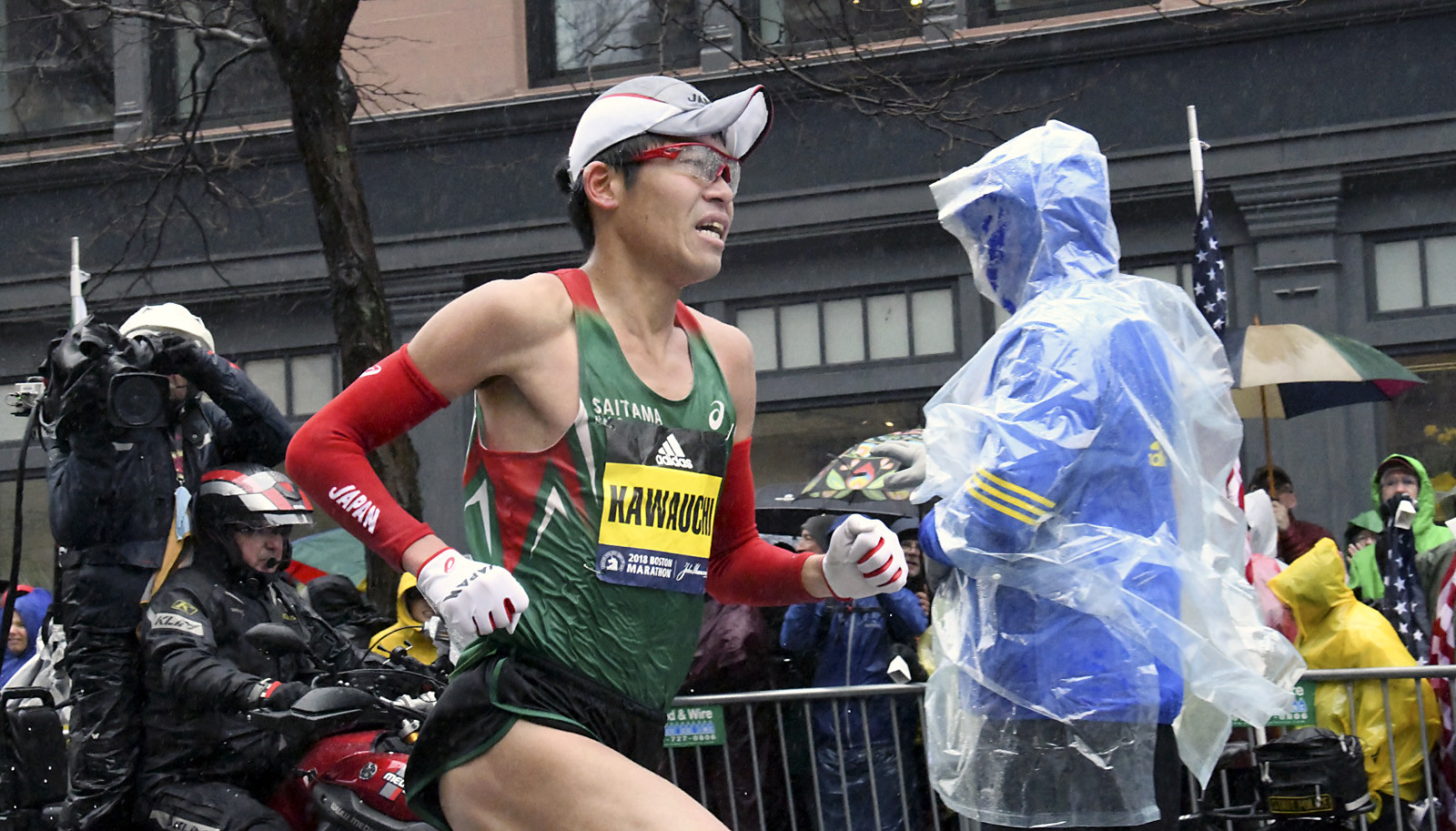
3. Bring some Mylar blankets to wrap up in and sit on in the corrals.
4. Don’t over dress for the actual race. If it’s raining you will be weighted down by sopping wet not needed gear. Remember the faster you run the more heat you generate and you can’t run fast if you have 15 lbs of soaked gear on.
5. Hat and gloves are key. Race singlet will work just fine, maybe arm sleeves. If below 40 I sometimes would wear two singlets.
6. If windy use the people around you to draft. In the infamous nor’easter in 2007 we had gusts of 30 mph right in our faces all damn day. I tucked in whenever I could conserving energy and would pop out when the gusts subsided. I ran 2:55:17 good for 9th OA AG.
7. Start with a 12 oz Poland spring water bottle in your hand and skip the congested mile 2 and 4 water stops. I found in big urban marathons I’d drink 6oz at mile 2 and then finish it at mile 4 but most importantly I skipped the crowded chaos of those first 2 stops.
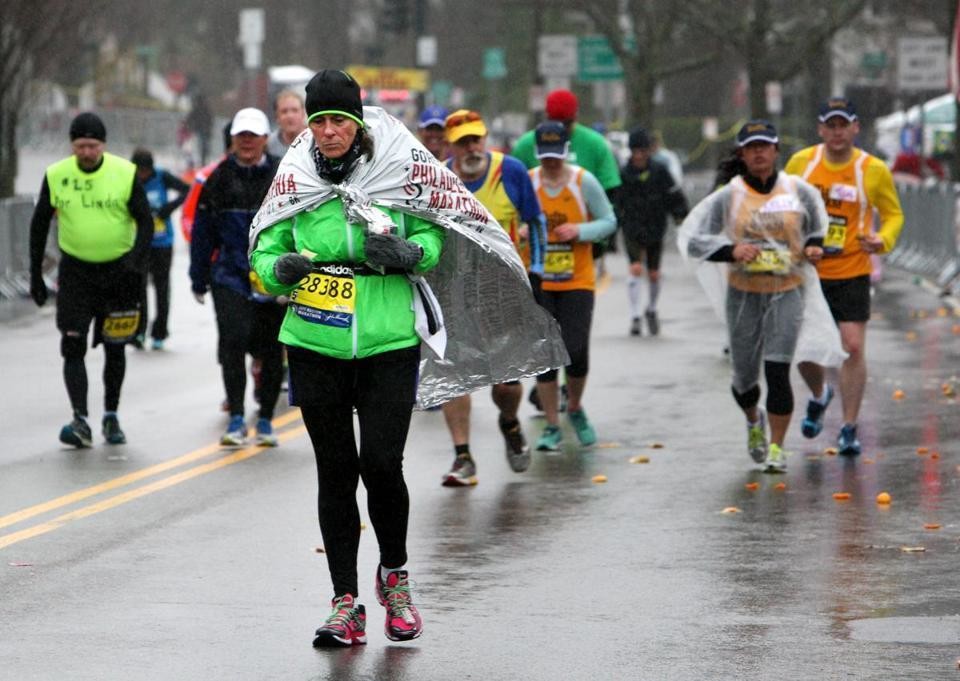
8. Don’t follow the crowds. If village is insane you don’t need to go there. The hopkinton green right at the start is a fantastic place to wait. Plenty of Porto’s and you can head straight to your corrals when called. Lots of big trees to help shield you from weather.
9. Have fun and even if Mother Nature kicks you in the face Smile and yell, “yo bitch, BRING IT....IS THAT ALL YOU GOT!”
From Marathon Man Gary Allen who has run many Boston Marathons over many years.
by Gary Allen
Login to leave a comment
Maine Woman with MS is running the grand slam of Ultra Running - Marathon Man Gary Allen File 4
Melissa Ossanna, of Bar Harbor, Maine, has big plans for 2019. Not only will she be turning 50, she has registered for the “Grand Slam of Ultrarunning” (fondly called ‘The Slam’ by those who participate). This involves running four of the fiveoldest 100-mile footraces in the US, scheduled from June through September.
This is a laudable and often daunting goal for every runner who attempts it, but Ossanna has another challenge, she has Multiple Sclerosis. She was diagnosed with the condition in her mid-20’s and struggled quite a bit with temporary blindness, weakness and numbness in her limbs, and severe fatigue, among other issues.

In 2009, she was unable to stay awake all day at work and was forced to go on intermittent disability. She thought this might be the beginning of the end of her ability to earn a living, and most importantly, to be able to stay active with her husband and young son.
Ultimately, she learned that the fatigue was a result of MS-related sleep apnea, which is treatable. As she started to sleep better, she got some energy back, and was able to return to work full time. She also decided to take the advice of her neurologist and use this bit of extra vigor to start exercising. For years, she had been too tired to even consider adding an exercise program to her schedule.
Where many people would start with a couch to 5K program, an introduction to fitness at the YMCA or something else reasonable, Ossanna happened into town the day before the Mount Desert Island marathon in 2011, had a moment of regret that she wasn’t a marathon runner, and then decided she would become one. She registered for the MDI marathon 2012 before she even owned running shoes.
The year of training was a long one, starting with not even beingable to run 0.8 miles (the length of the road she lived on). However, once marathon day arrived in October 2012, Ossanna was ready and had learned to love running.
That one marathon led to another, which then led to a 50K, then a trail 50K, then a 50-mile trail race, and then a 100-mile race. Ever since she started running, Ossanna has not had any notable MS exacerbations. She attributes her continued health to her running habit, and she never plans to slow down if she can help it.
With her decision to run the Grand Slam this year, Ossanna decided she wanted to raise money for a charity that meant something to her. She had raised money for the National MS Society in the past, and had considered doing that again, until she ran the Vermont 100 in 2018 and became familiar with Vermont Adaptive. Vermont Adaptive helps people with disabilities get outside and do active things.
Becoming active in the outdoors gave Ossanna her life back, and has prevented any permanent disability for her, and she wants to help others to “get outside and play”, regardless of any challenges they face.
If you want to support Melissa and Vermont Adaptive click on the link.
Top photo: Melissa at the Javelina Jundred 100 miler in AZ
(Marathon Man Gary Allen is an exclusive My Best Runs column. Gary is one of only a few who have run a sub three hour marathon over five decades and hopes to make it six soon.)
by Gary Allen
Login to leave a comment
What should I eat or drink during a marathon, pacing and what to do if you just are not into it early - Marathon Man Gary Allen File 3
Here are my thoughts on these three new questions. Send your questions to bob@mybestruns.com Subject line Question for Marathon Man.
1. What should you drink or eat during a marathon?
Nutrition during a marathon is critical to your success. Back in the 1970s when I started running marathons sports nutrition companies didn't exist. Besides water on the course we experimented with little things to help keep our energy going. My favorite was butterscotch hard candy. I pinned a few of these, still in their crinkled yellow wrappers, to the the waist band of my shorts, and would simply pop one in my cheek during the race. As it slowly dissolved, it would help give me steady energy.
Coke was also a go to product if we could get it on the course. Few races offered it officially but knowledgeable fans at old school events like Boston or Yonkers would sometimes hand out little mouth wash cups of Coca Cola, and it was pure gold.
I still think Coke works better than sports drinks. It offers caffeine, liquid and sugar and it helps keep your stomach happily settled. Today there are of course dozens of products and drinks and my best advice is to try a few in training and use the ones that work for you.
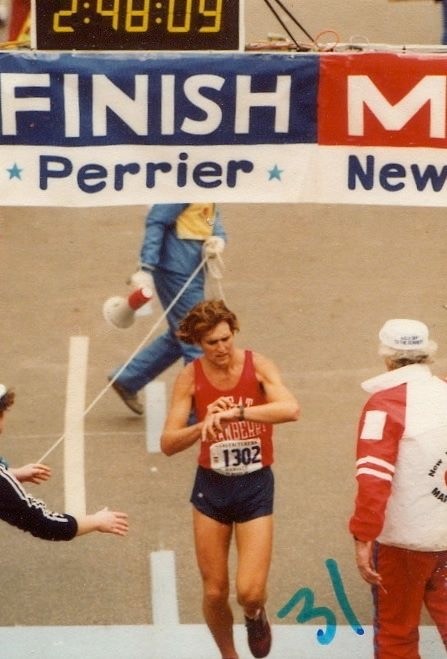
2. How should you pace a marathon?
The most common mistake is starting too fast. Men especially are far more impatient than women in the critical first 10k of marathons. If you are pacing well, the last 10k should be equal or faster than the first 10k. This means NOT starting like you were shot out of a cannon.
If your goal and training suggests a sub 3 hour marathon, you will need to average 6:52 pace but it would be a mistake to run that pace from the start. Instead you should run 7:00 to 7:05 pace and the 6:40s you will be running in the late miles because you were conservative early will feel great!
3. If you just aren't into the marathon during the first three miles, what should you do?
Breathe and move. Often a byproduct of the taper period is feeing lethargic in the early miles as you body remembers what to do. Many times tough early miles are an indicator that you'll have a great day.
How many times have we all heard the winners say, "I felt terrible early" and then they go on to win! Remember you are only human and it doesn't matter that you followed a perfect training plan down to the letter.
The marathon is still more like the common persons Mt. Everest versus something as predictable as telemarketers calling at dinner time. Remember marathon running is more like an expedition than a drive thru and not everyone summits.
(Marathon Man Gary Allen is a regular My Best Runs column. Gary Allen is one of a few runners who have run a sub three hour marathon for each of the last five decades. He is also a race Director and coach.)
by Gary Allen
Login to leave a comment
Millinocket Marathon
The Millinocket Marathon & Half has again joined forces with the Mount Desert Island Marathon, Half & Relay to create the Sea to Summit Maine Race Series, featuring two amazing events and a very special finishers medallion! This FREE event was started in 2015 to help a struggling Maine mill town that has been devastated by the closing of their...
more...Merry Christmas to all our My Best Runs followers from Bob Anderson and staff
We have been up here in Bend Oregon visiting my son and his family since Friday. My son Michael Anderson is our MBR results editor and post results as soon as they become available. Sometimes it is as soon as the first runners are crossing the finish line.
Michael (top photo) have carved out many running courses around his house. We have already run 22.2 miles since Friday and will at least get in six miles today.
Last Christmas Michael lived in Eugene and we ran the Pre Trail Christmas morning.
We have been running on Christmas Day forever. When Michael lived in the Bay Area I would run with my daughter Lisa and her family and then run with Michael in the afternoon.
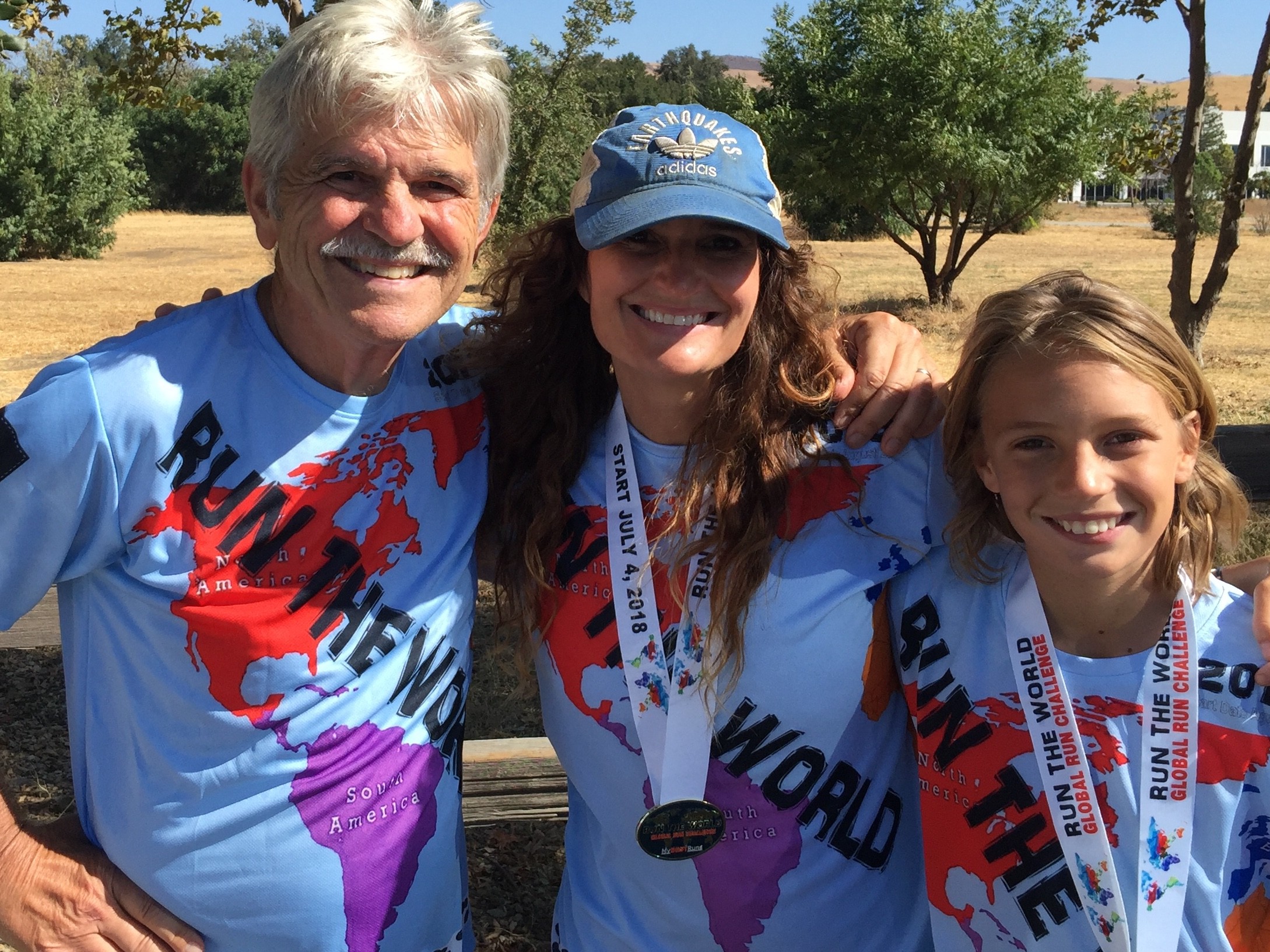
Lisa (second photo) and family lives in San Jose, California. She is our social media and newsletter editor. We celebrated Xmas with them before heading up to Oregon.
Both of my kids have run marathons, my wife has run a half marathon and many other races but after operations on both feet can’t run now (Catherine works out at the gym these days) and all my four grandkids run even including my two year old, Bear. Owen age 12 have already run a 5:52 mile. My son-in-law Justin has run a 1:27 half marathon.
We are a running family and have been forever. There is no better day than Christmas Day to get outside and get in a few miles. (Updated: Mike and I got in 7.1 miles through two inches of snow today.)
Two other members of our full time crew are Jaime and Manuel. They work at our La Piedad office.
Our webmaster Waitman Gobble keeps us all working and always is coming up with new features.
Gary Allen (Marathon Man Gary Allen) and Larry Allen (Larry Allen on Running) have signed on to do regular writing for us sharing their many years of running wisdom and knowledge with us. I am sure they will be getting out and getting in a few miles today.
Willie Korir is located in Nairobi, Kenya and has been sharing insights into what makes many runners in Kenya superstars. He has also run and logged 2851 miles for our three Run The World Challenges since July 4.
Our third Run The World team is not too far off of running and logging enough miles to circle the planet for the third time. I am so proud of our team.
Merry Christmas and Happy New Years to everyone. Be sure to get out today and let’s all make 2019 a super year. I know this is our plan here at My Best Runs.
by Bob Anderson
Login to leave a comment
Hitting the wall, what to eat and your longest training run were the first three questions for Marathon Man Gary Allen File 2
I am going to cover a lot of ground in my column here. Here are my thoughts on three questions I have been asked many times.
1. What is the best thing to do if you hit the wall at 20-miles in a marathon?
Firstly, you shouldn’t hit the wall in a marathon, if you do you are probably undertrained or you likely ran far beyond your abilities, especially in the early miles.
Rather than tell people what to do when they hit the wall I’d like to share how not to. In most cases you need to train for years to harden you mind and body to the rigors of what you are undertaking. There are no short cuts to avoid hitting the wall besides training hard and racing smart.
2. What should you really eat and drink during the two days before running a marathon?
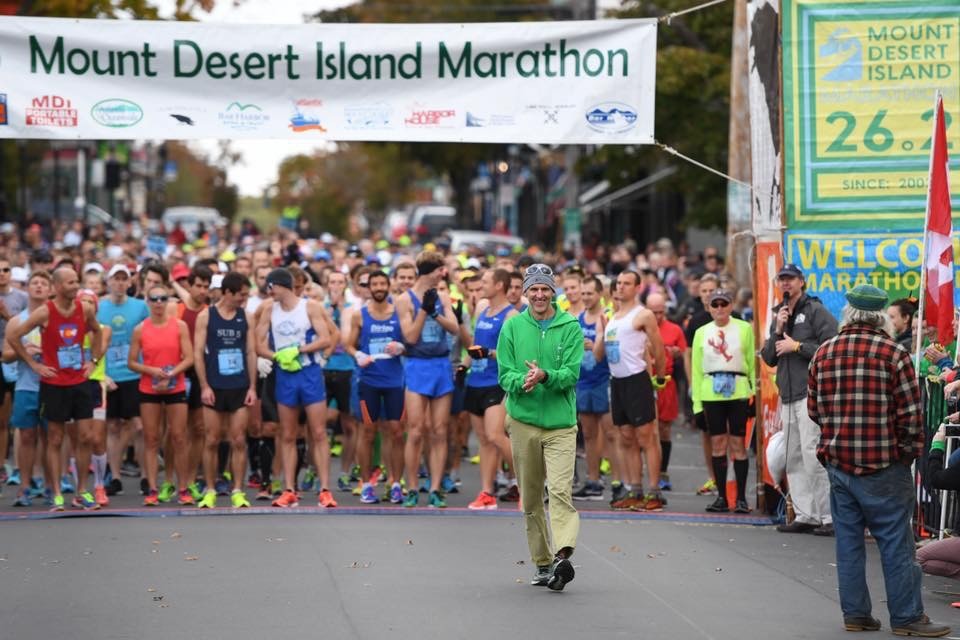
Eat and drink whatever you typically eat or drink . Sadly in this internet age there is so much information flying around it actually turns marathon running into the proverbial alligator under your bed it’s not.
Remember a marathon is a man made distance and if you turn it into something more than the long road race it is, you unintentionally give the race mental power you’ll need to run. The moment you start feeling bad, because of all this information that is pinging off your brain about what you should have eaten or drank, it is like being handed an anchor.
3. How long should you longest run be training for a marathon, when should it be done and at what speed?
You should be able to cover 28 -30 miles fairly comfortably. These long runs shouldn’t be timed but run at a very comfortable pace whatever that is. Long runs (aka time on your feet) are to help you build endurance and efficiency and not speed.
As far as frequency, I particularly hate weekly training schedules. Your body doesn’t know Sunday from Wednesday, instead I tell people I have coached to break down running into basic ingredients such as long runs, hills, speed etc and make sure you add all of these basic ingredients about every 10-12 days.
Running is not rocket science no matter how many people try to convince you otherwise. My advice is to go have fun and because you are having so much fun you’ll get much better at playing!
(Marathon Man Gary Allen is a regular My Best Runs column. Gary Allen is one of a few runners who have run a sub three hour marathon for each of the last five decades. He is also a race Director and coach.)
by Gary Allen
Login to leave a comment
Donテ「竄ャ邃「t use winter as an excuse instead make it a reason to go outside and run says Marathon Man Gary Allen File 1
I get lots of questions about winter running. Many wonder about traction on ice and snow or even how to dress in cold temperatures. At our just run Millinocket Marathon & Half held in Northern Maine the air temperature was between 4F and 6F at the start depending if you were standing in the sun or not.
It was pretty icy on the Golden Road as runners headed north towards Mt Katahdin. (pic).
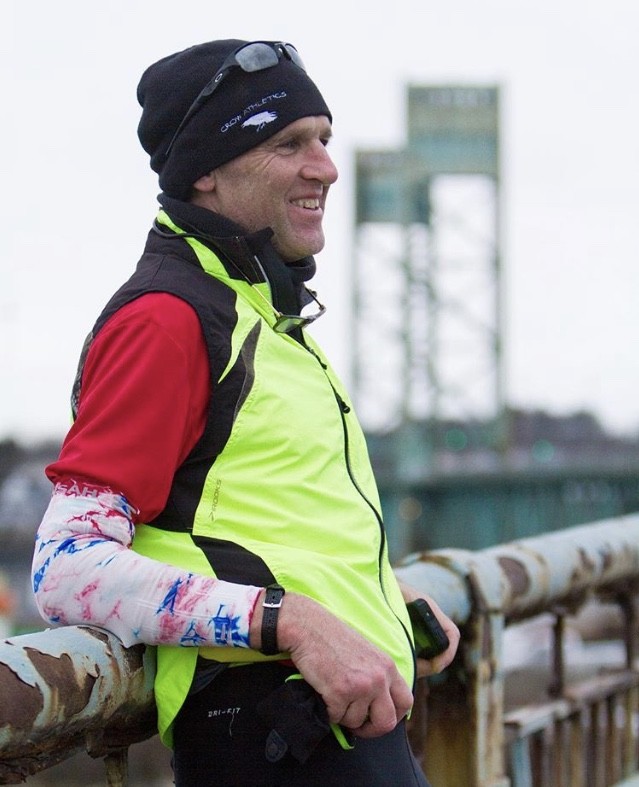
The fact is that running on ice is not that difficult in standard running shoes. When we run, vs when walking, our individual foot strikes are in contact with the ground for much less time, meaning we are almost already falling forward, coupled with the fact that when running we exert about 1.5 times of our body weight in down force per stride, which makes us into traction machines. The tricky part of running on ice and snow is turning or stopping. This is when we fall.
As far as what to wear? In temps below 10F it’s always about layers. For example a tech tank top, a tech short sleeve, a tech long sleeve, plus a wind jacket on top. Tights plus wind pants on the legs, two hats and face protection, if windy, and gloves with mittens over and you’re good to go!
As I like to tell runners, don’t use winter as an excuse instead make it a reason to go outside and run!
(Marathon Man Gary Allen - Read more from Gary here at My Best Runs. Gary is one of only a few marathoners in the world who has run a sub three hour marathon in each of the last five decades. In 2020 he wants to make it six. No one in the world has done that.)
by Gary Allen
Login to leave a comment
He hopes to be the only man on earth to run a sub three hour marathon in six consecutive decades - Marathon Man Gary Allen introduction
Gary Allen is going to sharing his thoughts and knowledge here in MBR’s Running News Daily under the banner “Marathon Man Gary Allen.”
In his first column I sent him some questions so we all could get a flavor of what makes this incredibly creative and talented man tick. I know I am looking forward to his writings here and I hope you are too!
So Gary, how did you discover running?
”I wanted to be a hockey player,” wrote Gary “but there weren’t enough kids on the small Maine Island I am from for a team. Then in 1972 I saw a skinny guy named Frank Shorter run into a stadium in Munich and I was like cool, you can win a gold medal just for running.”
How important is running to you?
“I have been involved with running for my entire life so assigning importance to who and what I am is like trying to describe how big the universe is to an ant. It is impossible for me to adequately portray how all encompassing running is to me as a part of my life,” says Gary.
Does being an accomplished runner help you put on first class events?
“Absolutely! The races I direct are direct reflections of what and how I expect races to be run. I would never ask anyone to do something I haven’t done so I merely apply my expectations and my creativity to every race I help to organize.”

What one race you have run stands out as number one?
“Ahhhhh I can’t narrow it down to one race. However, Boston is always high on every list. I have one more to run to make a quarter century of unicorn chasing. The Burning Man ultra (photo) is a race I love beyond words. It helped change my thinking about how races run.
“A combination of an other worldly environment and no entry fee helped to expand my thinking. NYC (19 finishes) is where I was inspired to become a race director after watching Fred Lebow in action in 1980. It is reality true, if you can make it there you can make it anywhere!
Tell us about your coaching?
“I have coached at the HS level and coached many individuals over the years but my current team is at Mount Desert Elementary School where I have been the XC coach for the past 12 years.
“My philosophy is pretty simple, make running fun and kids will want to run more and the more they run the better they get at running which is of course even more fun for them!
“One of of our key workouts is called, zombie tag. We run in the surrounding Maine woods and trails and I assign a few zombies and the rest of the team tries to run away and not get caught.
“I also love to hide pizzas in the woods and have the kids run around and find them! Apparently my methods work cause in the past decade plus we have won almost every meet we’ve run!”
What are your personal goals as a runner?
“As a race director: I want to leave our sport better than I found it.
”As a coach: I want to inspire the next generations of runners to think about running for their entire lives. Rather they run or not matters little, but I want them to always remember and to love running knowing some will go on and be involved in our sport as competitors, coaches or even as race directors.
”As a competitor: I have accomplished pretty much every goal I’ve set for myself. Of late I struggle some with the naturally selfish nature of being a long distance runner.
“The single dimensional, ‘I’m training for,’ ‘Look at me’ has become less and less appealing to me over the years.
“As you know one of my proudest achievements is joining the five decades Sub 3 hour marathon club. At this point nobody on earth has run a sub 3 hr marathon in six consecutive decades so maybe it’ll give it a shot in 2020!
“Incidentally Joan Benoit Samuelson is the only other Mainer on the list and the only woman who has done this and I wouldn’t count out Joanie to run a sub 3 for her 6th decade.
Can you give us some background info?
“For Work: Lobsterman, Boat Builder, Carpenter, Yacht captain, Farmer, Auctioneer, Coach, Inspirational speaker.”
”Some Personal Records: Marathon 2:39:10, Half Marathon 1:13:20, 50 miles 6:21.
”My family settled on Great Cranberry Island in the 1670s. I am 12th generation. It’s a small offshore Island off the coast of Maine. It’s probably the most unlikely place to become a runner as the main road is only two miles long. I built my own house by hand from trees growing on my land. I dug my well with a shovel figuring they used to do it that way so why couldn’t I?”
by Bob Anderson
Login to leave a comment
Millinocket Marathon expected to draw more than twice as many runners as last yearテ「竄ャ邃「s race
Just four years after it started, a race that was meant to breathe some new life into a former mill town continues to balloon, with this weekend’s Millinocket Marathon and Half expected to draw more than twice as many runners as last year’s race.
Some 2,600 runners are slated to run the mountainous course on Saturday, up from about 1,200 who came from across the country to run it last year. The races, which are 26.2 and 13.1 miles long, will start at 10 a.m. at Veterans Memorial Park in Millinocket. re than twice as many runners as last year’s race.
Racers don’t need to pay a registration fee; instead, organizers have urged them to support local restaurants, shops and hotels. They started the race in 2015 with the goal of bringing economic activity to a region that was battered by the closure of two paper mills.
Like last year, a number of local establishments are stepping up to feed and entertain the runners and their fans, offering spaghetti dinners, a variety show, an artisan fair, an ugly sweater party and other events from Friday afternoon to Saturday night.
“Everything that’s happening is just being done better,” said Gary Allen, the race’s founder.
“The town is becoming more and more actively involved with dinners and breakfasts and dances, and actively looking at it as an opportunity to welcome people to their town. Just as runners train for competitions, I think the town is becoming an expert in hospitality and welcoming people.”
Login to leave a comment
Gary Allen, founder of the Mount Desert Island Marathon and the Millinocket Marathon named race director of the year
Login to leave a comment
Millinocket Maine needed a boost, sure. But not a handout. So Gary Allen started an entry free marathon to help the town
Long-distance runners have a reputation for being as wacky as they are driven. Gary Allen is proof positive of both.
As coach of the Mount Desert Island Middle School cross-country team, he trains his squad mostly by playing zombie invasion games behind the school. He has a screaming-loud stocking hat for every occasion.
He’s ebullient and sometimes long-winded but knows how to affect reticence with an authenticity that would make any fellow Mainer proud. He treats everyone like his new best friend and begins each conversation with, “Hi. I’m Gary Allen.”
Allen has run a hundred marathons and won his age group in more than a few. In fact, he is one of a few worldwide who have run a sub-three-hour marathon in five different decades.
He’s the founder of the Mount Desert Island Marathon and the Great Run, a six-hour ultramarathon where competitors simply run back and forth on Great Cranberry Island as many times as they can. But none of that means much to the 4,500 people who call Millinocket, Maine USA home.
When they talk about a marathon, they’re talking about the one Allen first organized last year — the one that put the town on the long-distance map after Runner’s World picked up the story. The one that has more than 1,000 people clamoring to fly across the country for the opportunity to run here on December 10.
Like most of Allen’s schemes, this one started on a whim. Around Thanksgiving last year, he read yet another newspaper article characterizing Millinocket’s economic woes.
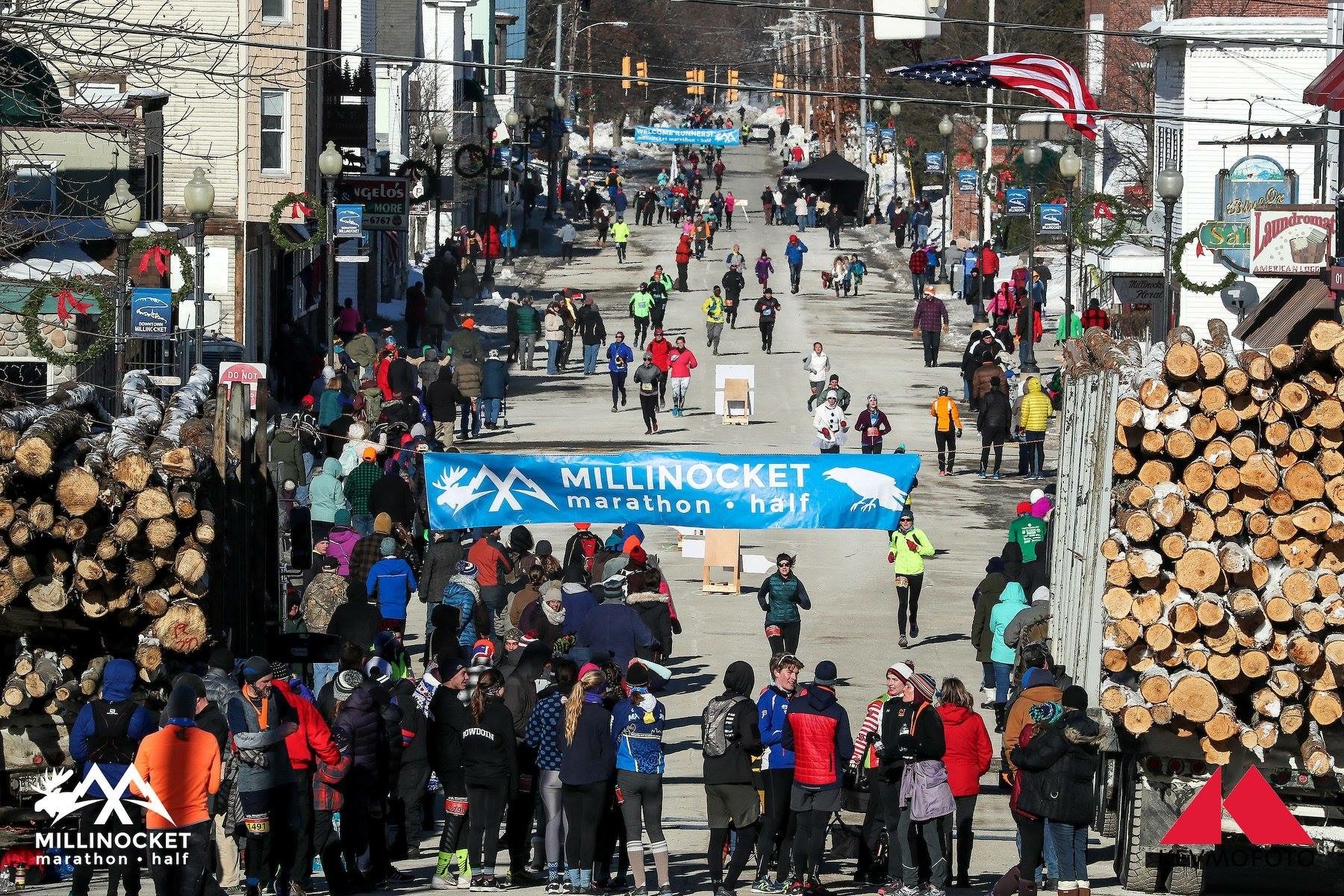
“It’s not like I set out to find a little town to help. It’s more like a little town found me.” There’ve been a lot of those articles since the Great Northern paper mill closed here in 2008. In the years since, Millinocket has become a symbol for the failure of America’s manufacturing monotowns.
That doesn’t sit well with locals here. And it rubbed Allen the wrong way last fall too. Millinocket needed a boost, sure. But not a handout.
So Gary Allen decided to do what Gary Allen does best: he organized an impromptu marathon. This race was open to all and charged no entry fee. Instead, Allen suggested that participants take the money they would have spent on registration and spend it in Millinocket.
He didn’t advertise any of this except to post it to his Facebook page. Nonetheless, about 50 of his friends agreed to show up for what may well have been America’s first flash-mob marathon. Allen mapped the course on Google Earth.
It’s a gorgeous one: a lazy loop with lots of views of Katahdin and several miles on the iconic Golden Road, a 96-mile stretch of gravel connecting Millinocket and the Canadian border, before it drops back down into town for a finish at Veterans Memorial Park.
Allen warned participants that they’d need to be totally self-sufficient during the race. He printed out slips of paper detailing how to stay on the course. After they were done running, he figured they could have lunch or do some holiday shopping, then fuel up their cars and head home.
Millinocket might not even realize they’d been there. But word got out around in close-knit Millinocket. By the time Allen rolled into town, local businesses had emblazoned signs welcoming the runners. Locals set up a water station around the 5-mile mark and stood for hours guiding runners on the course and directing traffic. A cheering section assembled at the finish.
In other words, the marathon flash mob got flash-mobbed by the town they were supposed to be helping. And in that moment was born an unlikely love affair between one of Maine’s most charismatic runners and a town looking to get back on its feet.
After last year’s race, townspeople asked Allen if he’d organize another one. He agreed. And he said he thought he could make it bigger, better.
Earlier this year, he returned to Millinocket with a surveyor who could certify the course as an official Boston Marathon qualifier — the only one in the country without an entry fee.
As it turned out, Allen’s hastily drawn loop on Google Earth was less than 50 yards off the exact required distance. While Allen and the surveyor were in town, a total stranger offered the two men a house to stay in for as long as they needed.
That, says Allen, is the spirit of Millinocket — and Mainers in general, for that matter. For decades, the town was known as the “Magic City,” a nod to how it seemed to have sprung up overnight in what had previously been untrammeled wilderness.
Millinocket, founded in 1901, is but a blip. And like the Greek goddess Athena, it seemed to emerge fully formed from the mill itself — first as dozens of tar-paper shacks and rooming houses; soon after, as an Anytown, USA, with a bustling main drag and orderly blocks of houses. (Photo by Michael Wilson)
by Kathryn Miles
Login to leave a comment
Michael Wardian runs fastest hundred miler ever in the state of Maine
Login to leave a comment
How fast did Amy Cragg run at the Tokyo Marathon?
Login to leave a comment


